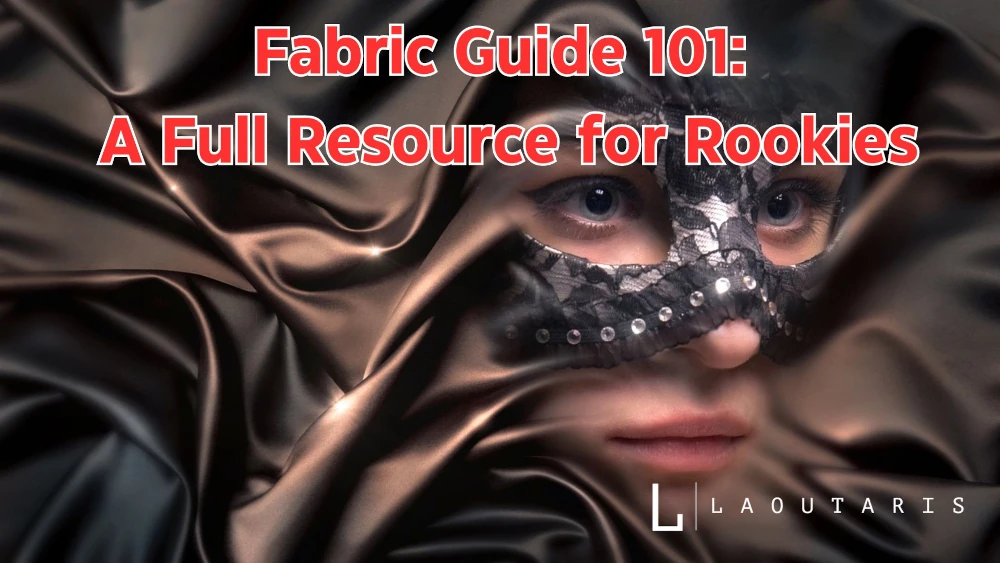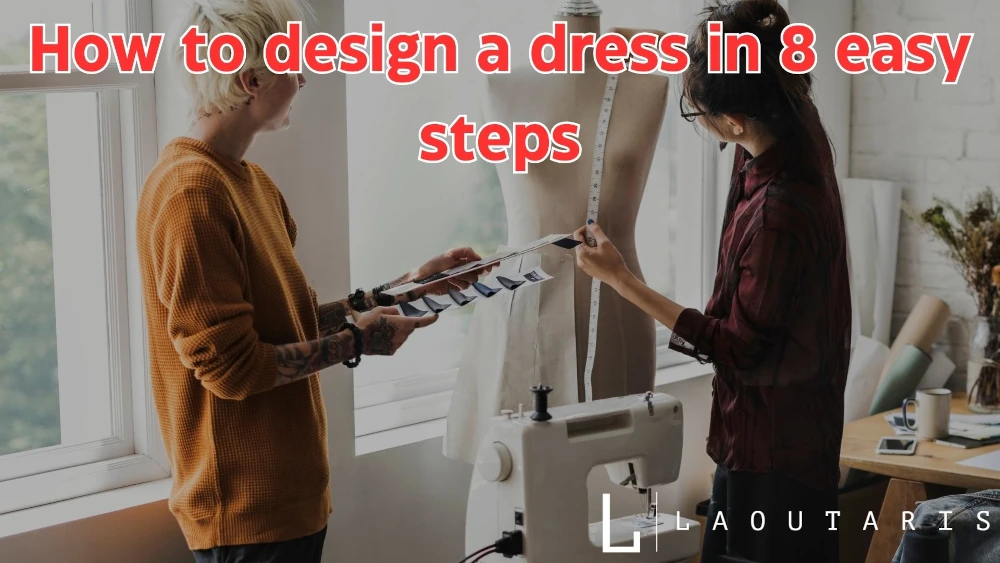Want to start a career in fashion design? Here, you can find the most accessible design tool for a dress. Use your imagination and begin a journey to the fantastic fashion world.
Table of Contents
The tool was last updated on 03/06/2024.
Materials Needed:
- Fabric (cotton, silk, etc.)
- Thread (matching the fabric)
- Scissors
- Pins
- Measuring tape
- Chalk or fabric marker
- Zipper or buttons
- Sewing machine or needle
- Iron
Tools:
- Dressmaker’s Shears
- Pinking Shears
- Seam Ripper
- Dress Form or Mannequin
- Pattern Tracing Paper
- Tracing Wheel
- Tailor’s Chalk
- Hem Gauge
Steps:
Using a measuring tape, measure the bust, waist, hips, and desired dress length. Note these measurements down accurately for reference.
Use the measurements to draft a pattern on pattern tracing paper. The pattern will include pieces for the front, back, sleeves (if any), and other design elements.
Place the pattern on the fabric, pin it in place, and carefully cut out the dress pieces using dressmaker’s shears. Be sure to follow the grain of the fabric.
Stitch together the front and back panels of the dress, aligning the seams according to the pattern. Use a sewing machine or needle and thread, and sew with a suitable seam allowance.
For dresses with a back opening, attach a zipper or sew buttons and buttonholes along the back seam. Ensure a secure and neat closure.
Finish the bottom edge of the dress to the desired length by folding the fabric under and sewing a hem. Use a hem gauge for consistent results.
Try on the dress or fit it on a dress form to check the fit. Make any necessary adjustments to ensure a comfortable and flattering fit.
Press the dress with an iron to remove any wrinkles and achieve a polished look. Trim any loose threads, and inspect the dress for any finishing touches.
Is there an online app to design my dress?
There are many apps for iOS or Android devices. We can recommend Stylebook for iOS devices and Combyne for iOS and Android devices. Check them out. They have millions of users already, and Combyne has a large online community where you can connect with other fashion enthusiasts.
Can I put my logo on my dress?
Yes, but the logo must be yours. There are many online logo design tools online. We prefer Canva because it is free and straightforward to use. Just make sure no one else uses your logo. Trademarks are very strict, and you must ensure your logo is unique.
There is an online site that trucks clothing trademarks. Check it out here.
How much should I charge for a dress?
The most important question I have always asked is how much I should sell my design.
There are three factors you need to consider:
- Who is my customer type?
- What is my supply cost?
- How much is my time worth?
- Depending on your customer, you must consider whether it is a high-end or online customer. Next is the quality of the dress. Is it a high-quality or budget (cheap materials) dress? Consider all the above factors and proceed to the next option.
- Your supply cost includes materials, fabric, zipper or buttons, etc. Do not forget the indirect costs like maintenance of your tools, the electricity, and other small things we all fail.
- Lastly, you need to add your time worth. This is easy because, let’s say, you charge $15 per hour and work for 2 hours. You will need to add $30 to the total cost. Do not forget that when you design a dress, you will create a batch of 4 per hour. That means you must divide 30/4 to find the price you must add.
That’s it. Your cost now is the supply cost plus your worth of time.
Always add +10% to the calculated price for unexpected costs. You do not want to sell it for less than it cost you.
Where can I start learning how to design a dress online?
Here are five reputable online fashion design schools, along with their links and short descriptions:
- Fashion Institute of Technology (FIT) Online Programs
- Link: FIT Online Programs
- Description: FIT offers a range of online courses and programs in fashion design, fashion business, and more, providing students with industry-relevant skills and knowledge from a renowned institution.
- Savannah College of Art and Design (SCAD) eLearning
- Link: SCAD eLearning
- Description: SCAD’s eLearning platform offers flexible online fashion design degrees that cover various aspects of the industry, including fashion marketing, fashion management, and luxury fashion management.
- Parsons School of Design Online Programs
- Link: Parsons Online Programs
- Description: Parsons offers online fashion design courses and degrees focusing on creative innovation, technical skills, and design thinking, allowing students to explore their artistic potential.
- University of Fashion
- Link: University of Fashion
- Description: This online platform provides a wide range of video tutorials and lessons covering every aspect of fashion design, from sketching and pattern-making to draping and sewing techniques.
- London College of Fashion Online Courses
- Link: LCF Online Courses
- Description: London College of Fashion offers short online courses that allow aspiring designers to learn from experienced professionals and explore specialized topics within the fashion industry.
Free online fashion design courses
Here’s a list of 5 free online fashion design courses, along with their links and short descriptions:
- Fashion as Design by The Museum of Modern Art (MoMA)
- Link: Fashion as Design
- Description: Offered on Coursera, this course explores fashion’s cultural and historical significance as a design process and a form of artistic expression. Learn from experts and gain insights into the design of garments and accessories.
- Fashion Design and Creation by Tsinghua University
- Link: Fashion Design and Creation
- Description: Presented on edX, this course covers the basics of fashion design, including sketching, pattern making, and garment construction. Learn the creative and technical aspects of designing your clothing.
- Introduction to Sustainable Fashion by Copenhagen Business School (CBS)
- Link: Introduction to Sustainable Fashion
- Description: Hosted on FutureLearn, this course delves into sustainable practices within the fashion industry. Explore eco-friendly materials, ethical production, and responsible fashion design principles.
- Fashion Industry Essentials by Parsons School of Design
- Link: Fashion Industry Essentials
- Description: Presented on edX, this program offers courses covering fashion business, design, and marketing essentials. Get an overview of the fashion industry’s various aspects.
- Introduction to Fashion and Textile Design by University of Fashion
- Link: Introduction to Fashion and Textile Design
- Description: University of Fashion provides free video lessons on fashion illustration and fabric science. This course is a great starting point for anyone interested in fashion design.
These free online fashion design courses offer valuable knowledge and skills to help you explore and enhance your passion for fashion.
Frequently Asked Questions
Can I use any fabric for designing a dress?
Yes, you can choose various fabrics, such as cotton, silk, linen, or blends, depending on the style and occasion of the dress.
Do I need to be an expert to create my dress?
No, you don’t need to be an expert, but having basic sewing skills and understanding patterns will be helpful. You can start with simple designs and gradually build your skills.
What’s the purpose of a dress form or mannequin?
A dress form helps you visualize how the dress will look when worn. It’s beneficial for fitting and making adjustments during the design process.
How important is accurate measuring?
Accurate measuring is crucial as it ensures the dress fits well. Measure your bust, waist, hips, and dress length precisely to achieve the desired fit.
Can I hand-sewn the dress instead of using a sewing machine?
You can hand-sew the dress if you’re comfortable with it. It might take longer, but the result can be just as beautiful.
What’s the purpose of a seam ripper?
A seam ripper is used to undo stitches when you make a mistake or need to adjust. It’s a valuable tool for correcting errors without damaging the fabric.
How do I choose between a zipper and buttons?
Your choice depends on the style and ease of wearing. Zippers offer a clean look, while buttons can add a decorative touch. Consider the design and your sewing skills.
Can I make modifications to the dress after it’s sewn?
Yes, you can make adjustments even after sewing. Fit the dress, assess how it looks, and then make any necessary modifications to achieve your desired outcome.

Pashalis Laoutaris
Fashion Blogger
I am a professional writer, fashion blogger, and owner of the site https://laoutaris.com. As a salesperson for more than 20 years, I have experience of 10 years in the fashion industry. I consider myself a true fashionista. I am writing daily blog articles about fashion, tools and converters, and everything you need to know about the current fashion trends.
Share this article
Our Latest Articles
Laoutaris Recommends











Wow Thanks for this review i find it hard to realize beneficial details out there when it comes to this content thank for the site site